| Date | Text | |
|---|---|---|
30 Nov 1953
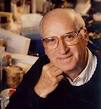
Daniel I. Arnon |
Daniel I. Arnon (biology) Daniel I. Arnon demonstrates in the laboratory the chemical function of photosynthesis in chloroplasts. |
|
30 Nov 1953

Eduard Paul Tratz |
Eduard Paul Tratz (biology) Eduard Paul Tratz and Heinz Heck propose the species name Bonobo for what was previously known as the pygmy chimpanzee. |
|
30 Nov 1953

vitamin B12 |
vitamin B12 (chemistry) Publication of the first analysis of the three-dimensional molecular structure of vitamin B12 by a group including Dorothy Hodgkin, and utilising computer analysis provided by Kenneth Nyitray Trueblood. |
|
30 Nov 1953

Joseph Needham |
Joseph Needham (history of science) Joseph Needham begins publication of Science and Civilisation in China (Cambridge University Press). |
|
30 Nov 1953

Charles Singer |
Charles Singer (history of science) A History of Technology, edited by Charles Singer, E. J. Holmyard and A. R. Hall, begins publication (Oxford University Press). |
|
30 Nov 1953

Leonard Jimmie Savage |
Leonard Jimmie Savage (mathematics) Leonard Jimmie Savage publishes Foundations of Statistics, promoting Bayesian statistics. |
|
30 Nov 1953

anti-psychotic |
anti-psychotic (medicine) The first of the anti-psychotic phenothiazine drugs, Chlorpromazine, starts being sold under the trade names Thorazine (U.S.) and Largactil (U.K.) |
|
30 Nov 1953

sucrose gap |
sucrose gap (medicine) The sucrose gap is introduced by Robert Stämpfli for the reliable measurement of action potential in nerve fibers. |
|
30 Nov 1953
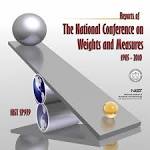
General Conference on Weights and Measures |
General Conference on Weights and Measures (metrology) 10th General Conference on Weights and Measures proposes the six original SI base units. |
|
30 Nov 1953

Konrad Lorenz |
Konrad Lorenz (psychology) Man Meets Dog is published by Konrad Lorenz. |
|
30 Nov 1953

New Zealand |
New Zealand (technology) New Zealand engineer Sir William Hamilton develops the first pump-jet engine (the "Hamilton Jet") capable of propelling a jetboat. |
|
30 Nov 1953

drip brew |
drip brew (technology) The first electric drip brew coffeemaker is patented in Germany and named the Wigomat after its inventor Gottlob Widmann. |
|
30 Nov 1953
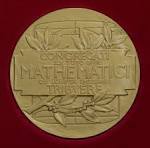
Fields Prize in Mathematics |
Fields Prize in Mathematics (awards) Fields Prize in Mathematics: Kunihiko Kodaira and Jean-Pierre Serre, the latter being the youngest-ever winner, at age 27 |
|
30 Nov 1953

Kevin Warwick |
birth Kevin Warwick February 9 - Kevin Warwick, British scientist, author of March of the Machines. |
|
02 Jan 1954

Harold Hopkins |
Harold Hopkins (physics) Harold Hopkins and Narinder Singh Kapany at Imperial College London report achieving low-loss light transmission through a 75 cm long optical fiber bundle. |
|
07 Jan 1954
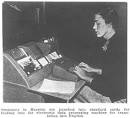
Georgetown-IBM experiment |
Georgetown-IBM experiment (computer science) Georgetown-IBM experiment: the first public demonstration of a machine translation system held in New York at the head office of IBM. |
|
10 Jan 1954

Caspian Tiger |
Caspian Tiger (biology) Last confirmed specimen of a Caspian Tiger is killed, in the valley of the Sumbar River in the Kopet Dag Mountains of Turkmenistan. |
|
17 Jan 1954
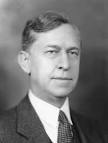
Leonard Eugene Dickson |
death Leonard Eugene Dickson Died 17 Jan 1954 at age 79 (born 22 Jan 1874). American mathematician who made important contributions to the theory of numbers and the theory of groups. He published 18 books including Linear groups with an exposition of the Galois field theory. The 3-volume History of the Theory of Numbers (1919-23) is another famous work still much consulted today. |
|
23 Feb 1954

Polio vaccine |
Polio vaccine In 1954, the first mass inoculation of children against polio with the Salk vaccine began in Pittsburgh, Pennsylvania. |
|
23 Feb 1954

polio |
polio (medicine) The first mass vaccination of children against polio begins, in Pittsburgh, Pennsylvania. |
|
01 Mar 1954

hydrogen bomb |
hydrogen bomb (physics) United States carries out a hydrogen bomb test on Bikini Atoll in the Pacific Ocean. |
|
30 Mar 1954
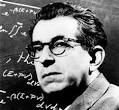
Fritz Wolfgang London |
death Fritz Wolfgang London Died 30 Mar 1954 at age 54 (born 7 Mar 1900). German-American physicist who, with Walter Heitler, devised the first quantum mechanical treatment of the hydrogen molecule, while working with Erwin Schrödinger at the University of Zurich. In a seminal paper (1927), they developed a wave equation for the hydrogen molecule with which it was possible to calculate approximate values of the molecule's ionization potential, heat of dissociation, and other constants. These predicted values were reasonably consistent with empirical values obtained by spectroscopic and chemical means. This theory of the chemical binding of homopolar molecules is considered one of the most important advances in modern chemistry. The approach is later called the valence-bond theory. |
|
10 Apr 1954

Auguste Lumière |
death Auguste Lumière Auguste Lumière (born 1862), French inventor, film pioneer. |
|
12 Apr 1954

Oppenheimer suspended |
Oppenheimer suspended In 1954, the American Atomic Energy Commission (AEC) began hearings to revoke Robert Oppenheimer's security clearance, thereby severing him from the commission's work. Although he had led the scientists making the atomic bombs during the WW II Manhattan Project, he had been affected by the bombs' death toll and chilling descriptions of radiation sickness. When the Soviet Union detonated an atom bomb in 1949, Edward Teller and Ernest Lawrence lobbied feverishly to develop the hydrogen bomb. Oppenheimer chaired the General Advisory Committee AEC, repudiated the hydrogen bomb as a weapon of “genocide.” In May 1953, when Lewis Strauss accepted the chair of the AEC, he regarded Oppenheimer as a security risk, and wanted him to be dismissed. |
|
21 Apr 1954

Emil Post |
death Emil Post Emil Post (born February 11, 1897), American mathematician and logician |
|
03 May 1954

Earnest A. Hooton |
death Earnest A. Hooton Died 3 May 1954 at age 66 (born 20 Nov 1887). Earnest Albert Hooton was an American physical anthropologist and primatologist who investigated human evolution and racial differentiation, classified and described human populations, and examined the relationship between personality and physical type, particularly with respect to criminal behaviour. He established Harvard University as a principal U.S. centre for physical anthropology. In the 1930s, he studied American criminals, and in his controversial books, The American Criminal (1939) and Crime and the Man (1939), he sought to to connect criminal behaviour with physical or racial factors. His books written for the layperson include: Up from the Ape; Apes, Men and Morons; and Twilight of Man, Why We Behave Like Apes and Vice Versa. |
|
07 Jun 1954
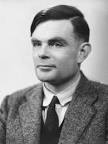
Alan Turing |
death Alan Turing Alan Turing (born 1912), English mathematician and computer scientist (probable suicide). |
|
10 Jun 1954
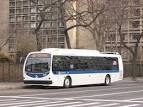
Gas turbine bus |
Gas turbine bus In 1954, General Motors announced their GM Turbocruiser, a modifed GMC coach powered by a gas turbine, had been built by their research staff and its test runs already exceeded a total of 2,000 miles. The engine consisted of a single burner with two turbine wheels. While one turbine wheel was used to drive the centrifugal compressor, the second delivered power for the transmission to the rear wheels of the vehicle |
|
20 Jun 1954
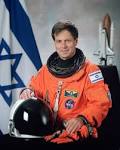
Ilan Ramon |
birth Ilan Ramon Ilan Ramon (died 2003), Israeli astronaut. |
|
22 Jun 1954

Karl Taylor Compton |
death Karl Taylor Compton Died 22 Jun 1954 at age 66 (born 14 Sep 1887). American educator and physicist who directed development of radar during WW II. His research included the passage of photoelectrons through metals, ionization and the motion of electrons in gases, fluorescence, the theory of the electric arc, and collisions of electrons and atoms. In 1933, President Roosevelt asked him to chair the new Scientific Advisory Board. When the National Defense Research Committee was formed in 1940, he was chief of Division D (detection: radar, fire control, etc.) In 1941, he was in charge of those divisions concerned with radar within the new Office of Scientific Research and Development (OSRD). Afterwards he was cited for personally shortening the duration of the war. He was the first recipient William Procter Prize for Scientific Achievement, and brother of Arthur H. Compton. |
|
26 Jun 1954

Obninsk Nuclear Power Plant |
Obninsk Nuclear Power Plant (technology) Obninsk Nuclear Power Plant, the first civilian nuclear power station, is commissioned in the Soviet Union. |
|
29 Jun 1954
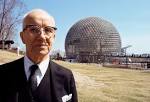
Buckminster Fuller |
Buckminster Fuller (technology) Buckminster Fuller is granted a United States patent for his development of the geodesic dome. |
|
07 Jul 1954

Saul Dushman |
death Saul Dushman Died 7 Jul 1954 at age 70 (born 12 Jul 1883). Russian-American physical chemist, a world leader in vacuum science and technology, a GE assistant director of research and author of several standard scientific textbooks. One example is Scientific Foundations of Vacuum Technique (1922). It is very readable and he gets to the hows and whys things work the way they do. One of the true classics, it was completely revised in 1961 by his colleague James Lafferty. Using a formula he derived, Dushman calculated the conductances for cylindrical tubes based on their measured dimensions and produced the table which he included in the book that is still used to design a vacuum system. |
|
11 Jul 1954

Henry Valentine Knaggs |
death Henry Valentine Knaggs Henry Valentine Knaggs (born 1859), English practitioner of naturopathic medicine. |
|
15 Jul 1954
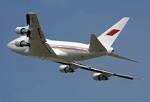
Jet airplane |
Jet airplane In 1954, the first commercial jet transport airplane built in US - the Boeing 707 prototype - the model 367-80, made its maiden flight from Renton Field, south of Seattle, Washington. From its model number, it was nicknamed the Dash 80. The flight marked the 38th anniversary of the Boeing Company. The project was announced on 30 Aug 1952. Within two years, the company's $16 million investment produced the airplane rolled out for display on 14 May 1954. The 707 series of jetliners, being larger and faster soon replaced propeller airplanes for international travel. On 26 Oct 1958, Pan American World Airways began trans-Atlantic 707 jet service between New York and Paris. |
|
17 Jul 1954

Angela Kasner |
birth Angela Kasner Angela Kasner, German physical chemist and Chancellor. |
|
28 Aug 1954

George M. Church |
birth George M. Church George M. Church, American geneticist, molecular engineer and chemist. |
|
20 Sep 1954

FORTRAN |
FORTRAN In 1954, the first successful test compilation and execution of a computer program using what became FORTRAN was run by Harlan Herrick at IBM. It took until 1957 to develop into a fully-operational, commercial product. As implied by its name (FORMula TRANslator), Fortran was designed as a high-level language for technical and scientific applications which primarily needed calculation, rather than working with characters. John Backus at IBM supervised the development of the programming language that would allow users to express their problems in commonly understood mathematical formulae. By 1958 the language was expanded to Fortran II, which included subroutines, functions and common blocks, and in 1962 IBM introduced the extended Fortran IV. |
|
29 Sep 1954

CERN |
CERN (physics) CERN is founded by twelve European states. |
|
30 Sep 1954

U.S.S. Nautilus, first nuclear submarine commissioned |
U.S.S. Nautilus, first nuclear submarine commissioned In 1954, the world’s first nuclear submarine, the USS Nautilus, was commissioned at Groton, Conn. Its nuclear reactor eliminated diesel engines which previously limited a sub’s range and speed. Nuclear power also eliminated diesel fuel storage spaces and periodic surfacing to recharge batteries. Nautilus was launched 21 Jan 1954, and could dive longer, faster, and deeper than any submarine before it. It was 319-ft long, 27-ft beam (hull diameter), could dive to 700-ft, travel at over 20 knots, and was crewed by 11 officers and 105 enlisted men. Nautilus continued to break records in 1958 as the first vessel to travel under the Arctic ice and cross the North Pole. Decommissioned in 1980, the sub was converted into a museum in 1985. K-19, the first Soviet nuclear submarine, was commissioned 30 Apr 1960. |
|
30 Sep 1954
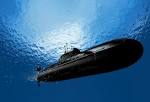
submarine |
submarine (technology) The submarine USS Nautilus (SSN-571), the first atomic-powered vessel, is commissioned by the United States Navy |
|
16 Nov 1954

Albert Francis Blakeslee |
death Albert Francis Blakeslee Died 16 Nov 1954 at age 80 (born 9 Nov 1874). American botanist and geneticist whose international recognition began with his Ph.D. degree thesis on his discovery of sexuality in the lower fungi (Sexual Reproduction in the Mucorineae, 1904) was significant to the understanding of sexual reproduction of the lower plants. His study of the mutation and geographical distribution of the jimson weed, Datura, provided important information concerning chromosome behavior, genetic balance, and species evolution. He discovered that the alkaloid colchicine causes chromosone duplication in plants - the first demonstration of chemical mutagenesis - which led to commerical production of giant strains of flowers. |
|
20 Nov 1954

Clyde Vernon Cessna |
death Clyde Vernon Cessna Died 20 Nov 1954 at age 74 (born 5 Dec 1879). American Aviator, aircraft manufacturer who invented the cantilever wing and a V-shaped tail configuration and a simple, flexible monoplane design. |
|
29 Nov 1954

Enrico Fermi |
death Enrico Fermi Enrico Fermi (born 1901), Italian American physicist. |
|
30 Nov 1954
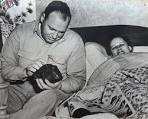
Meteorite strikes woman |
Meteorite strikes woman In 1954, in Sylacauga, Alabama, USA, Ann Hodges, 32, was bruised on the arm and hip by a meteorite that fell through the roof of her house into her living room. It smashed the case of her wooden radio and struck her as she lay resting on her sofa. The 9-lb (4-kg), 6 in (15 cm) diameter fragment came from a larger, likely more than 150-lb, chondrite meteorite that exploded over central Alabama about 2 pm, according to reports from people in several states that saw a bright flash across the sky. This remains (2006) the only recorded instance of a person being hit by a meteorite. She donated it in 1956 to the Alabama Museum of Natural History, and it is known by her name as the Hodges Meteorite. |
|
30 Nov 1954

Sylacauga, Alabama |
Sylacauga, Alabama (astronomy) In Sylacauga, Alabama, an 8.5 pound sulfide meteorite crashes through a roof and hits Mrs. Elizabeth Hodges in her living room after bouncing off her radio, giving her a bad bruise; the first known modern case of a human being hit by a space rock. |
|
05 Dec 1954
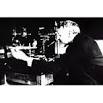
Charles Palache |
death Charles Palache Died 5 Dec 1954 at age 85 (born 18 Jul 1869). American mineralogist who was one of the most eminent crystallographers and mineralogists of the world, he lived in a period of revolutionary developments in mineralogical science. At the University of California (PhD 1887), he did the field work for the first geologic maps of the San Francisco Peninsula and the Berkley area. In 1895, while at Heidelberg taking courses in petrography, he was introduced to morphological crystallography by Victor Goldschmidt. Palache threw himself with enthusiasm into the study of crystals, and laid the foundation for the work he pursued vigorously for the next fifty-five years. |
|
25 Dec 1954
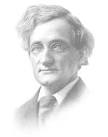
Liberty Hyde Bailey |
death Liberty Hyde Bailey Died 25 Dec 1954 at age 96 (born 15 Mar 1858). American horticulturist who helped create the science of horticulture, made systematic studies of cultivated plants, and advanced knowledge in hybridization, plant pathology, and agriculture. He was a recognized authority on sedges, tropical palms, blackberries, grapes, cabbages, pumpkins and squashes, among others. He is particularly notable for his great encyclopedias (Cyclopedia of American Agriculture, in four volumes, 1907-9) and important manuals (Cyclopedia of Horticulture in six volumes). He was the first to experiment with continuous electric illumination (Influence of the electric arc lamp upon greenhouse plants, 1891) and coined the term cultivar (1920s) for a cultivated variety of plant, not a wild variety, produced through cultivation. |
|
31 Dec 1954
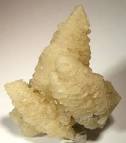
benstonite |
benstonite (geology) The first specimens of the mineral benstonite are collected by Orlando J. Benston in the Magnet Cove igneous complex of Arkansas. |